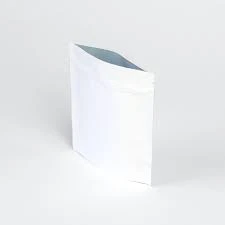- Afrikaans
- Albanian
- Amharic
- Arabic
- Armenian
- Azerbaijani
- Basque
- Belarusian
- Bengali
- Bosnian
- Bulgarian
- Catalan
- Cebuano
- chinese_simplified
- chinese_traditional
- Corsican
- Croatian
- Czech
- Danish
- Dutch
- English
- Esperanto
- Estonian
- Finnish
- French
- Frisian
- Galician
- Georgian
- German
- Greek
- Gujarati
- haitian_creole
- hausa
- hawaiian
- Hebrew
- Hindi
- Miao
- Hungarian
- Icelandic
- igbo
- Indonesian
- irish
- Italian
- Japanese
- Javanese
- Kannada
- kazakh
- Khmer
- Rwandese
- Korean
- Kurdish
- Kyrgyz
- Lao
- Latin
- Latvian
- Lithuanian
- Luxembourgish
- Macedonian
- Malgashi
- Malay
- Malayalam
- Maltese
- Maori
- Marathi
- Mongolian
- Myanmar
- Nepali
- Norwegian
- Norwegian
- Occitan
- Pashto
- Persian
- Polish
- Portuguese
- Punjabi
- Romanian
- Russian
- Samoan
- scottish-gaelic
- Serbian
- Sesotho
- Shona
- Sindhi
- Sinhala
- Slovak
- Slovenian
- Somali
- Spanish
- Sundanese
- Swahili
- Swedish
- Tagalog
- Tajik
- Tamil
- Tatar
- Telugu
- Thai
- Turkish
- Turkmen
- Ukrainian
- Urdu
- Uighur
- Uzbek
- Vietnamese
- Welsh
- Bantu
- Yiddish
- Yoruba
- Zulu
Exploring 12 Unique Varieties of Paper for Various Uses and Applications
Exploring 12 Different Types of Paper A Guide for Artists, Writers, and Crafters
Paper is an essential medium in our daily lives, used for everything from writing and printing to drawing and crafting. With various types of paper available, each designed for specific purposes, understanding these differences can greatly enhance our artistic and practical endeavors. Let’s delve into twelve different types of paper, exploring their characteristics, uses, and benefits.
1. Printer Paper This standard paper is ubiquitous in homes and offices. Typically 20 lb. in weight, it is designed for printing documents. Smooth and bright, printer paper is ideal for text-heavy applications, though it may not hold up well for heavy ink or watercolors.
2. Cardstock Heavier and thicker than standard printer paper, cardstock is excellent for creating cards, brochures, and scrapbook materials. Ranging from 65 lb. to 110 lb. in weight, its sturdiness allows it to withstand more stress during crafting.
3. Watercolor Paper Specifically designed for watercolor painting, this type of paper is made to absorb water without warping. Available in different textures such as hot-pressed (smooth), cold-pressed (noted for its rough texture), and rough, watercolor paper allows artists to apply various painting techniques effectively.
4. Sketch Paper Primarily used for drawing and sketching, this paper comes in a variety of textures and weights. It is often slightly textured to provide some grip for pencils, charcoal, and ink. Sketch paper is an ideal choice for artists looking to practice or experiment with different techniques.
Exploring 12 Different Types of Paper A Guide for Artists, Writers, and Crafters
6. Tooth Paper Featuring a rough texture, tooth paper is perfect for chalk and pastel applications. The texture allows the medium to cling to the surface, producing vibrant results. This type of paper is often favored by artists who enjoy using dry media.
12 different types of paper

7. Origami Paper Lightweight and usually printed with vibrant patterns or colors, origami paper is specifically made for folding. With a smooth finish, it holds creases well and comes in a variety of sizes. This paper is essential for anyone interested in the art of paper folding.
8. Tracing Paper Semi-transparent and smooth, tracing paper allows artists to see through it to create accurate reproductions of line drawings. It's widely used in architectural and engineering fields, as well as by artists for studies and layouts.
9. Tissue Paper Thin and delicate, tissue paper is often used for wrapping gifts and creating paper crafts. Its lightweight nature makes it easy to manipulate, allowing for creative uses in layering, origami, or decorative elements.
10. Construction Paper Known for its vibrant colors, construction paper is slightly textured and non-fade. It’s popular in schools for arts and crafts projects, providing a sturdy option for children to work with when creating various art pieces.
11. Holostock or Scratch Paper Ideal for children and artists, this type of paper features a black coating that, when scratched off, reveals bright colors underneath. It provides an exciting way to create vibrant images, combining creativity with a playful aspect.
12. Photo Paper This specialized paper is designed for printing high-quality photos. It comes in various finishes, including glossy and matte, and is coated to enhance color vibrancy and sharpness. Photographers often rely on premium photo paper to ensure their images reflect true quality.
Each type of paper serves a unique purpose and offers specific benefits depending on the creative task at hand. By understanding the attributes of these twelve paper types, artists, writers, and crafters can make informed choices, elevating their work and ensuring that the right paper complements their medium and technique.
In conclusion, exploring different types of paper opens up a world of creativity and expression. With the right paper, one can transform a simple idea into a beautiful, tangible piece of art. Whether you’re sketching your first drawing, crafting a heartfelt card, or capturing a fleeting moment in a photograph, the right paper can make all the difference. So next time you reach for a sheet, think about what it can offer and let your creativity flourish!













